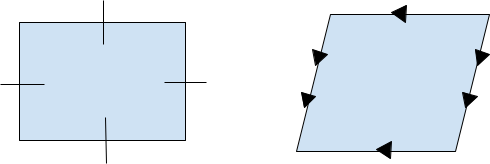- describe movement from one location to another using a grid map
- identify flips, slides, and turns using concrete materials and physical motion
- use motion vocabulary (a flip is a reflection, a turn is a rotation, a slide is a translation)
Thursday, 23 February 2017
Motion Geometry
Students are working on a mini-unit called Motion Geometry. The focus of the unit is to identify and describe the locations and movement of shapes and objects.
 Students will:
Students will:
Tuesday, 21 February 2017
Narrative Writing
Our new writing unit is centred around "Narratives". Students are examining the elements of a story and assessing what makes a story "a good read". Using mentor texts and strong samples, students will be writing parts of stories and later complete narratives over the next several weeks.

Students will brainstorm adjectives and phrases to describe different settings. They will learn how to tell about the character through character dialogue and actions. They will also determine possible problems and reasonable solutions before they begin to write.
We will be sharing our original stories with our peers and with our reading buddies.
We will be sharing our original stories with our peers and with our reading buddies.
Wednesday, 15 February 2017
2D Geometry Quiz
The Grade 3’s will be having a math quiz on Tuesday, February 21st, 2017. For the quiz, students need to know the following:
Learning Intention: We are learning to…
- compare 2-dimensional shapes and sort them by their attributes.
- describe relationships between 2-dimensional shapes.
Success Criteria
I can..
✓ identify right angles using a tool (corner of a piece of paper)
✓ compare an angle to a right angle (greater than, less than a right angle)
✓ sort 2-dimensional shapes by their attributes (number of sides, length of sides, number of vertices, number of right angles, number of pairs of parallel sides…)
✓ list the attributes of 2-dimensional shapes (a square has 4 equal sides, 4 right angles 2 pairs of parallel sides)
✓ explain the relationships (similarities, differences) between 2D shapes
✓ identify congruent 2-dimensional shapes (same size, same shape)
✓ identify lines of symmetry and complete symmetrical designs
✓ use appropriate markings to identify parallel sides and equal sides on a picture
Students need to take home their math duotang in order to be well prepared for the quiz. They must bring their duotang back to school each day as we will be reviewing the concepts in class.
Friday, 3 February 2017
Valentine's Day
This year, Valentine's Day is on Tuesday, February 14th. We will be exchanging Valentine's Day notes/ cards. If your child would like to write cards, we encourage him/ her to include a card for each student as we approach this as a "Friendship Day". Presently, there are 21 students in the class. Here is a list of first names for your reference.
 Nickon Venus
Nickon Venus
Jaan Kenward
Heian Eric
Kaitlyn Danial
Ryan Sabah
Davin Logan
Sophia Beyazid
Dora Aaron
Beneric Joanne
Dian Peggie
Edan
Jaan Kenward
Heian Eric
Kaitlyn Danial
Ryan Sabah
Davin Logan
Sophia Beyazid
Dora Aaron
Beneric Joanne
Dian Peggie
Edan
Living and Working in Ontario Unit
As our Structures unit wraps up, we will be commencing our second Social Studies unit shortly. Living and Working in Ontario will cover the following big ideas:
- physical and municipal regions of Ontario
- relationships between the natural environment, land use, and employment opportunities
- affects of land and resource use on the environment
This unit will encourage the development of :
- spatial skills
- extracting information from variety of maps
- constructing maps
- drawing conclusions and looking for connections
- examine maps of Ontario
- discuss how land is used in your community for recreation, commerce, housing, conservation, etc.
- look through newspapers or online resources to find examples of people acting as environmental activities/ stewards.
- discuss the ways we use and enjoy natural resources and why it is important to protect the environment.
- identify ways that you already work to protect the environment
Two Dimensional Geometry Unit
Students are starting a new math unit on two-dimensional geometry.
In this unit, students will:
– use a reference tool to identify right angles and to describe angles as greater than, equal to, or less than a right angle
– compare various angles, using concrete materials and pictorial representations, and describe angles as bigger than, smaller than, or about the same as other angles
– identify and compare various polygons (i.e., triangles, quadrilaterals, pentagons, hexagons, heptagons, octagons) and sort them by their geometric properties (i.e., number of sides; side lengths; number of interior angles; number of right angles)
– explain the relationships between different types of quadrilaterals (e.g., a square is a rectangle because a square has four sides and four right angles; a rhombus is a parallelogram because opposite sides of a rhombus are parallel)
– complete and describe designs and pictures of images that have a vertical, horizontal, or diagonal line of symmetry.
You can support your child at home by discussing various shapes and their attributes.
Subscribe to:
Comments (Atom)